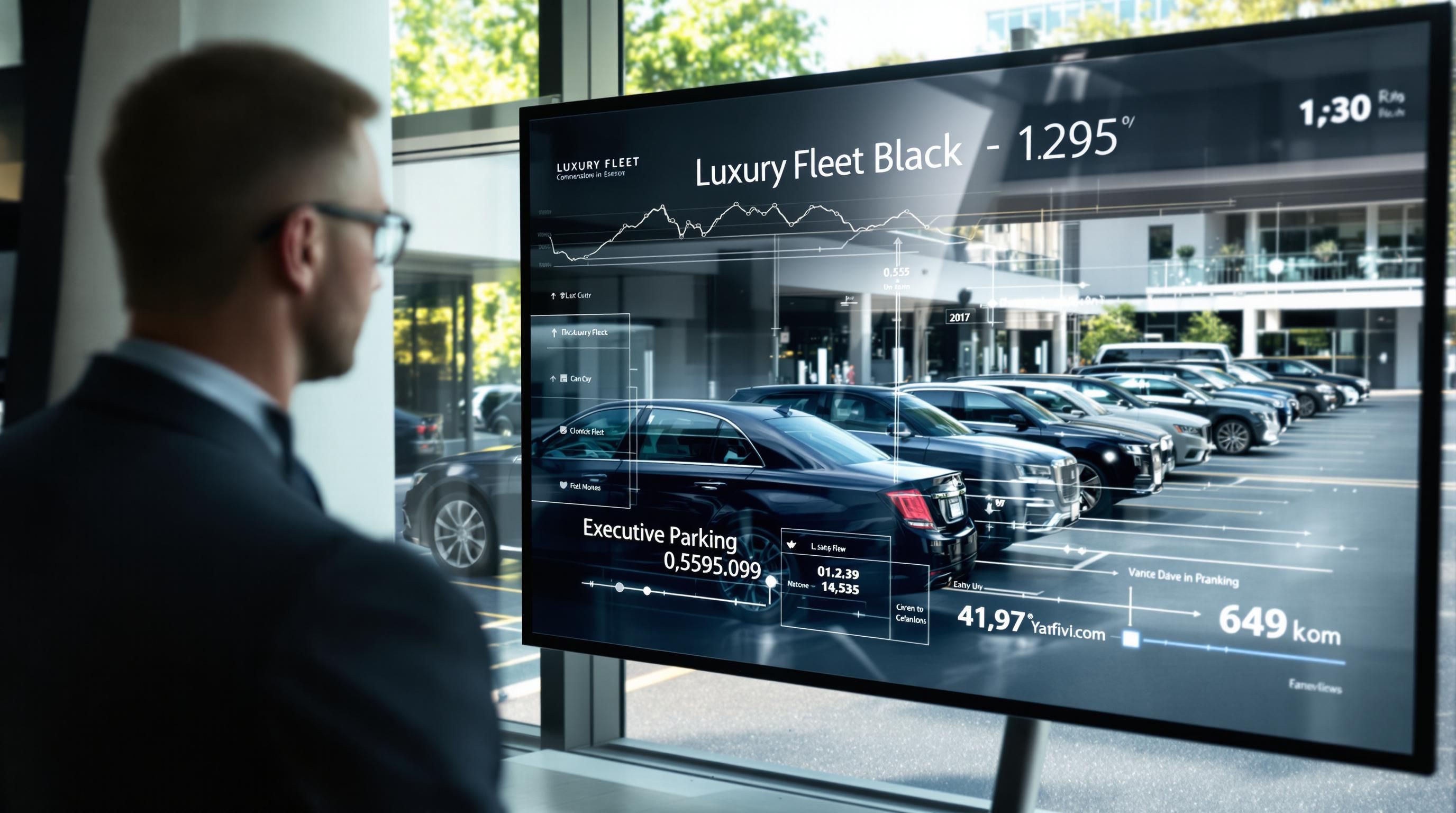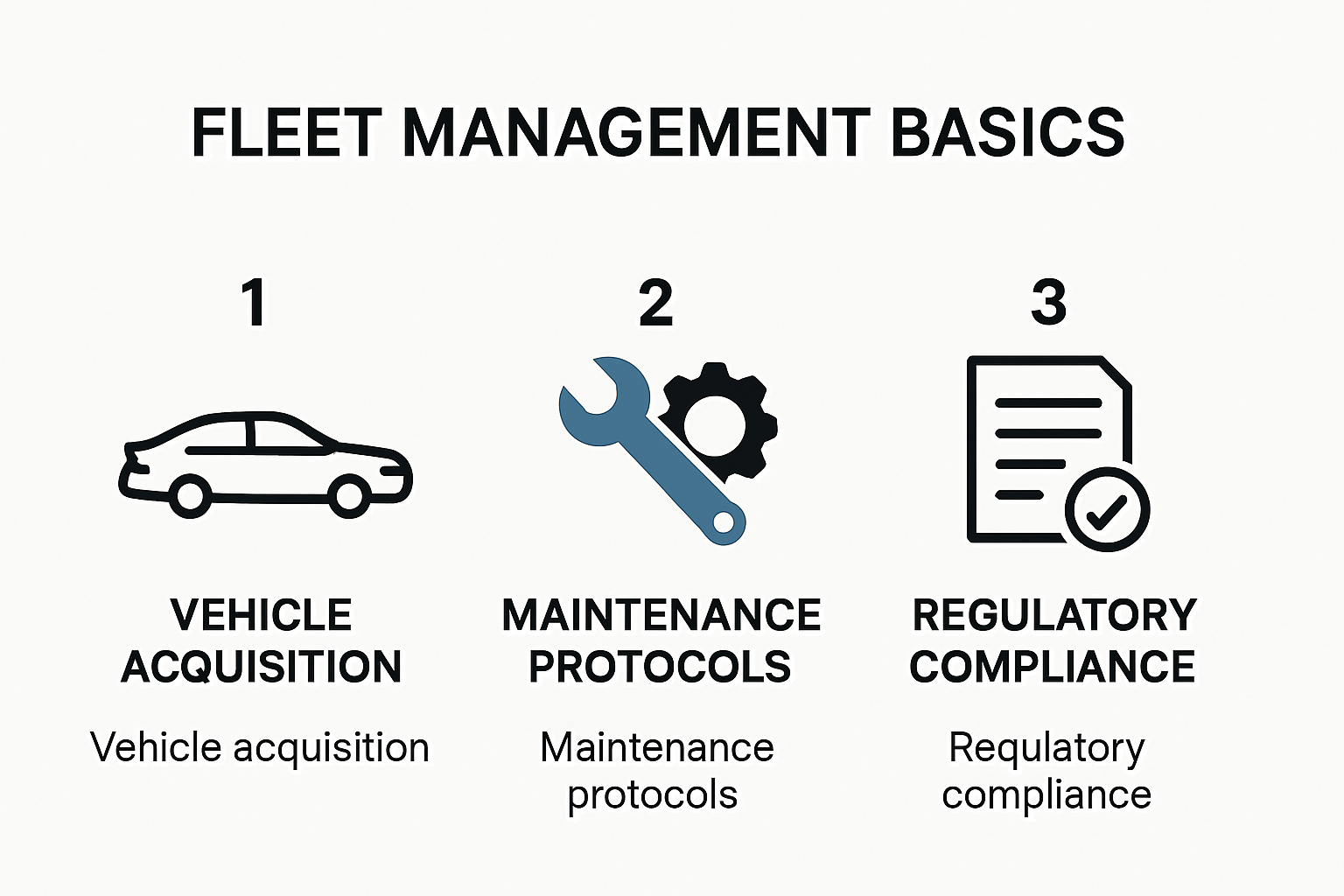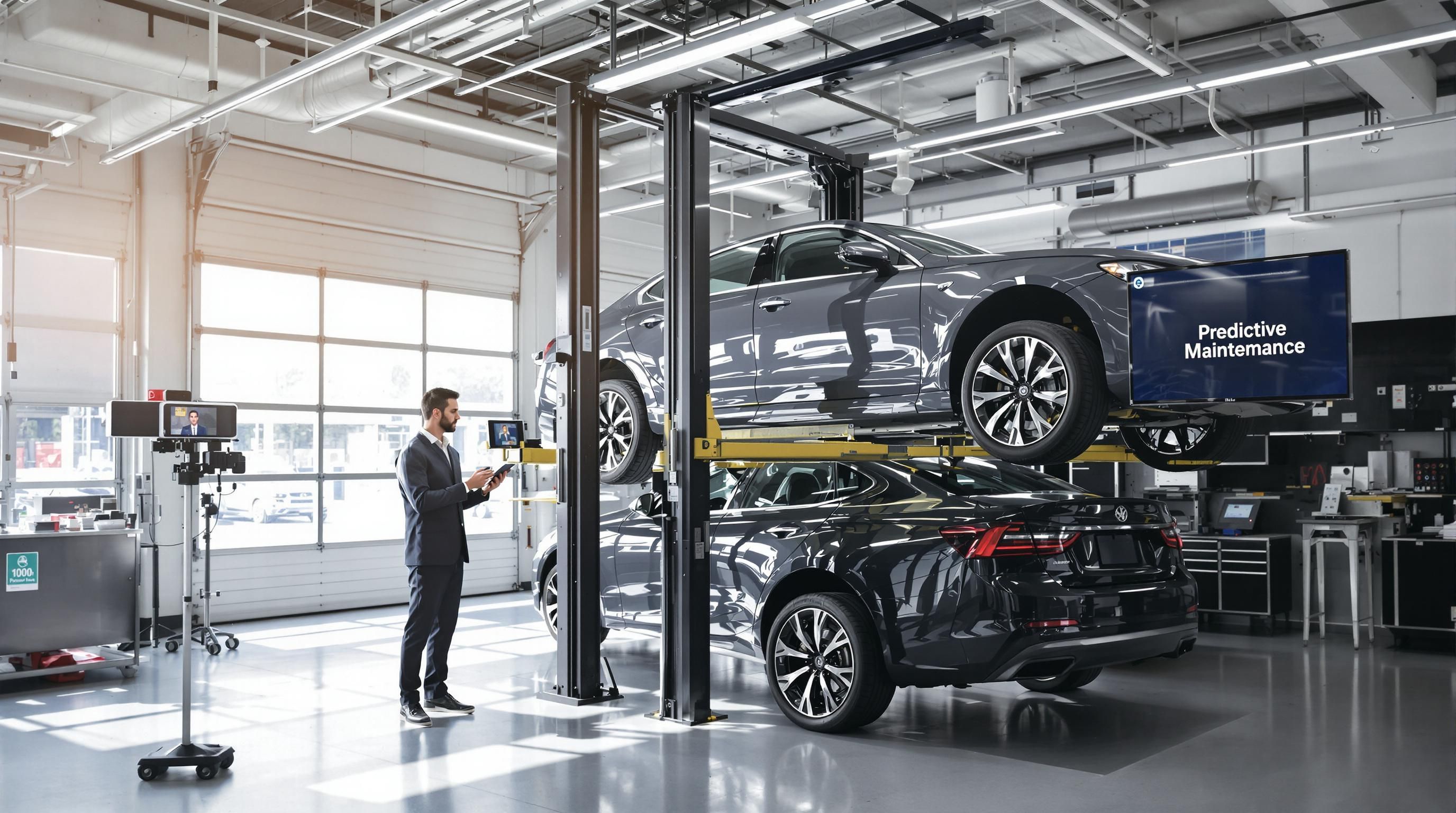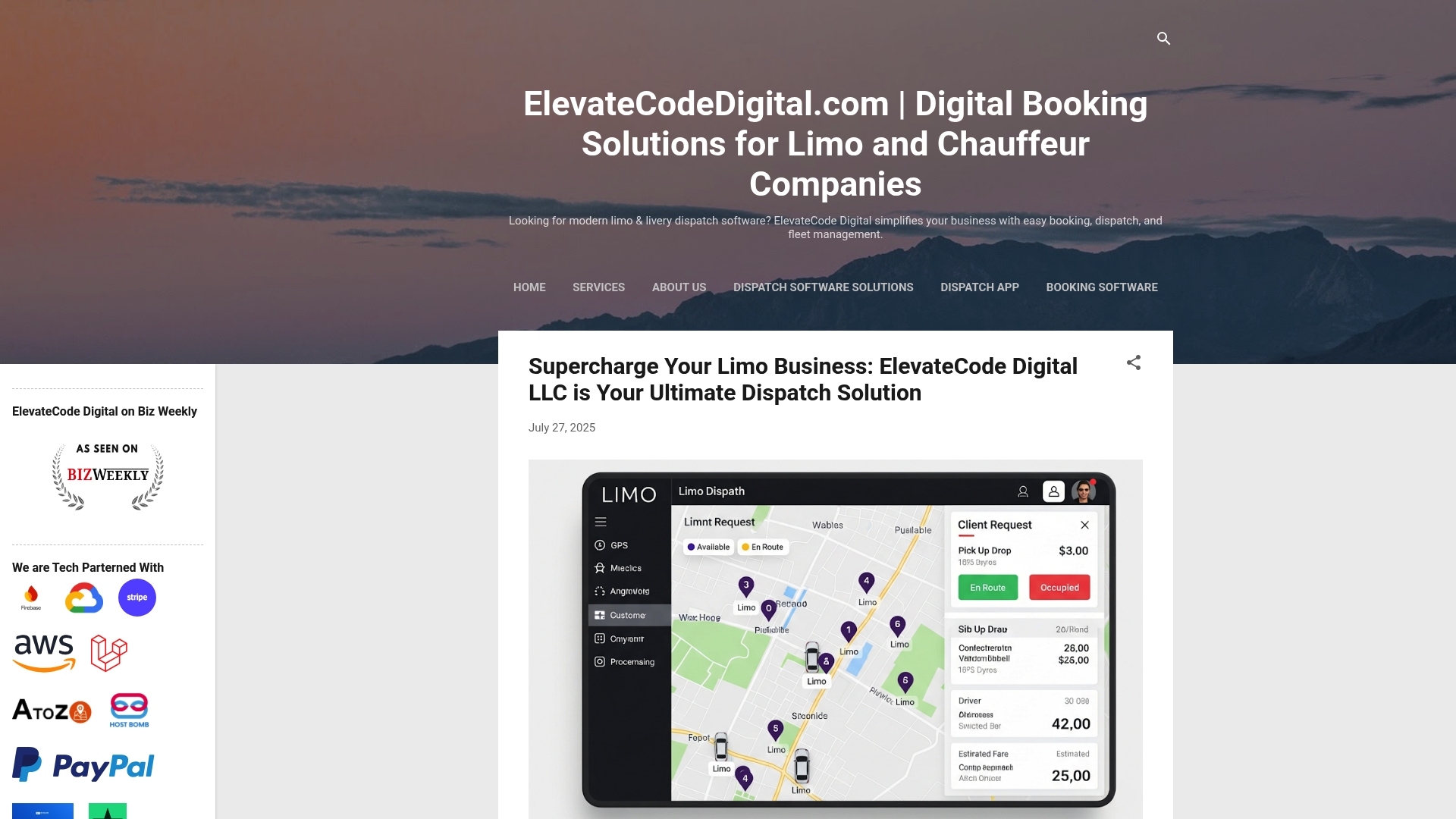Fleet Management Basics: Essential Guide for Luxury Transport 2025
Fleet Management Basics: Essential Guide for Luxury Transport 2025

Managing a luxury transport fleet is about so much more than tracking cars or buying shiny vehicles. Some fleets are integrating tech so advanced that predictive maintenance can reduce unexpected breakdowns by up to 40 percent. You might assume profitability comes down to cutting costs wherever you can, but the real winners are those who treat their fleet as a high-end service ecosystem, turning every ride into a powerful profit driver.
Table of Contents
- Key Elements Of Fleet Management Basics
- Choosing The Right Vehicles And Technology
- Best Practices For Fleet Safety And Compliance
- Boosting Profitability For Luxury Transport Fleets
Quick Summary
| Takeaway | Explanation |
|---|---|
| Strategic Vehicle Acquisition is Crucial | Luxury transport providers must evaluate vehicle purchases based on performance, operational efficiency, and technological integration to enhance overall effectiveness. |
| Comprehensive Maintenance Is Essential | Preventive maintenance with predictive diagnostics minimizes service interruptions and ensures safety and reliability for optimal client experiences. |
| Integrate Advanced Technology | Implementing telematics, automated dispatch, and predictive maintenance enhances operational efficiency and client satisfaction in luxury fleet management. |
| Focus on Safety Training | Structured driver management and training programs elevate safety standards, ensuring compliance, operational excellence, and protection for all stakeholders. |
| Innovate Revenue Streams | Luxury transport firms should diversify services and create premium offerings to drive profitability and adapt to shifting market demands. |

Key Elements of Fleet Management Basics
Fleet management represents a complex operational strategy that goes beyond simply owning and maintaining vehicles. For luxury transportation providers, understanding the fundamental elements becomes critical to maintaining a competitive edge and delivering exceptional service.
Vehicle Asset Management and Acquisition
Successful fleet management begins with strategic vehicle acquisition. Luxury transportation businesses must carefully evaluate each vehicle purchase through multiple lenses. Explore our cost reduction strategies to understand how intelligent acquisition impacts overall operational efficiency.
The Federal Energy Management Program (FEMP) recommends right-sizing fleets to match specific mission requirements. This means selecting vehicles that not only meet luxury transport standards but also align with operational needs. Considerations include passenger capacity, fuel efficiency, maintenance costs, and technological capabilities.
Key selection criteria involve:
- Performance Standards: Vehicles must meet high-end client expectations
- Operational Efficiency: Minimizing total cost of ownership
- Technological Integration: Compatibility with modern fleet management systems
Maintenance and Operational Protocols
Preventive maintenance transforms from a routine task to a strategic imperative in luxury transportation. According to SafetyCulture, comprehensive maintenance programs are fundamental to fleet management success.
Effective maintenance protocols go beyond standard service schedules. They require:
- Predictive Diagnostics: Using advanced telematics to anticipate potential vehicle issues
- Regular Inspections: Comprehensive checks that ensure passenger safety and vehicle reliability
- Rapid Response Mechanisms: Quick repair and replacement strategies to minimize service interruptions

Compliance and Performance Optimization
Navigating regulatory requirements while maintaining peak performance represents the final critical element of fleet management. The FEMP guidelines emphasize strategies like implementing transportation-on-demand services and utilizing telematics for optimizing routing and monitoring driving behavior.
Successful fleet managers must simultaneously balance:
- Regulatory Adherence: Meeting all transportation and safety standards
- Operational Efficiency: Maximizing vehicle utilization and minimizing idle time
- Client Experience: Ensuring consistent, high-quality service delivery
Mastering these key elements transforms fleet management from a administrative function into a strategic competitive advantage for luxury transportation providers.
To help clarify the key focus areas for vehicle acquisition and fleet management, the following table summarizes the main vehicle selection criteria discussed above:
| Criteria | Description |
|---|---|
| Performance Standards | Meets high-end client expectations |
| Operational Efficiency | Minimize total cost of ownership |
| Technological Integration | Compatible with fleet management systems |
| Passenger Capacity | Suits luxury transport needs |
| Fuel Efficiency | Considers hybrid/electric options |
| Maintenance Costs | Evaluates long-term service and repair expenses |
Choosing the Right Vehicles and Technology
Selecting the appropriate vehicles and technology represents a critical strategic decision for luxury transportation providers. The intersection of vehicle performance, technological integration, and client experience demands a comprehensive approach to fleet procurement and equipment selection.
Vehicle Selection Criteria for Luxury Transport
Vehicle selection goes far beyond aesthetic appeal. Luxury transportation requires a nuanced evaluation of multiple performance factors. Learn about advanced fleet optimization techniques to understand the strategic considerations behind vehicle selection.
According to McKinsey & Company, modern luxury transportation must consider several key parameters:
- Passenger Comfort: Advanced suspension systems, noise reduction technologies
- Technological Connectivity: Integrated communication and entertainment systems
- Fuel Efficiency: Hybrid and electric vehicle options
- Safety Features: Advanced driver assistance systems (ADAS)
Technology Integration and Smart Fleet Management
Technological capabilities now define competitive advantage in luxury transportation. Gartner Research highlights that modern fleet management systems must provide real-time tracking, predictive maintenance, and operational analytics.
Critical technological components include:
- Telematics Systems: GPS tracking and performance monitoring
- Automated Dispatch Solutions: Intelligent routing and scheduling
- Client Management Platforms: Seamless booking and communication interfaces
- Predictive Maintenance Technologies: AI-driven vehicle health monitoring
Future-Proofing Vehicle and Technology Investments
Successful luxury transportation providers must anticipate technological trends and maintain flexibility in their fleet strategy. Investments should balance current operational needs with potential future developments.
Key strategic considerations involve:
- Scalability: Technology and vehicle platforms that can adapt to changing market demands
- Interoperability: Systems that communicate across different platforms
- Upgrade Potential: Vehicles and technologies with modular design
- Total Cost of Ownership: Long-term economic viability of technological investments
Ultimately, choosing the right vehicles and technology requires a holistic approach that balances performance, client experience, operational efficiency, and future adaptability. Luxury transportation providers must view these selections as strategic investments that directly impact service quality and competitive positioning.
To better highlight essential technology integrations for smart fleet management, here's an overview table of critical fleet technologies mentioned:
| Technology Component | Primary Function |
|---|---|
| Telematics Systems | GPS tracking & performance monitoring |
| Automated Dispatch Solutions | Intelligent routing & scheduling |
| Client Management Platforms | Seamless booking & communication |
| Predictive Maintenance | AI-driven vehicle health monitoring |
| Operational Analytics | Data-based insights for efficiency |
Best Practices for Fleet Safety and Compliance
Safety and compliance represent foundational pillars of successful fleet management in luxury transportation. Developing a comprehensive strategy that protects passengers, drivers, and organizational assets requires a multifaceted approach that combines technological solutions, rigorous training, and proactive risk management.
Comprehensive Driver Management and Training
Driver performance directly impacts safety and operational excellence. Learn about strategic cost management techniques that integrate safety protocols into overall operational efficiency.
According to the United Nations Institute for Training and Research, creating a culture of safety requires structured training programs that address multiple dimensions:
- Technical Skills: Advanced driving techniques and defensive driving strategies
- Regulatory Compliance: Ongoing education about transportation regulations
- Technology Adaptation: Training on vehicle technologies and safety systems
- Psychological Preparedness: Stress management and professional conduct protocols
Regulatory Compliance and Documentation
The Washington State Department of Enterprise Services emphasizes the critical nature of comprehensive fleet administration. Successful luxury transportation providers must develop robust systems for tracking, documenting, and maintaining compliance across multiple regulatory domains.
Key compliance focus areas include:
- Vehicle Certification: Maintaining up-to-date registration and inspection documentation
- Insurance Requirements: Comprehensive coverage matching industry standards
- Driver Certification: Verifying professional credentials and ongoing training
- Safety Reporting: Implementing transparent incident tracking and resolution mechanisms
Technology-Driven Safety Strategies
Advanced technologies offer unprecedented opportunities for enhancing fleet safety. The U.S. Department of Energy's Federal Energy Management Program recommends leveraging technological solutions to create proactive safety environments.
Critical technological safety interventions include:
- Telematics Systems: Real-time driving behavior monitoring
- Predictive Maintenance: Automated vehicle health assessments
- Route Optimization: Intelligent navigation to minimize risk exposure
- Communication Platforms: Seamless driver-dispatch coordination
Successful fleet safety strategies transcend mere regulatory compliance. They represent a holistic commitment to passenger protection, driver welfare, and organizational excellence. By integrating advanced technologies, comprehensive training, and proactive risk management, luxury transportation providers can create safety ecosystems that differentiate their services in a competitive market.
Boosting Profitability for Luxury Transport Fleets
Profitability in luxury transportation requires a strategic approach that balances operational efficiency, client experience, and financial optimization. Successful fleet management goes beyond traditional cost-cutting measures to create comprehensive value generation strategies.
Optimizing Operational Efficiency
Operational efficiency represents the cornerstone of fleet profitability. Discover advanced cost reduction strategies that transform financial management in luxury transportation.
According to McKinsey & Company, luxury transport providers must focus on multiple profitability drivers:
- Vehicle Utilization: Maximizing revenue-generating hours
- Predictive Maintenance: Reducing unexpected downtime
- Route Optimization: Minimizing unnecessary operational expenses
- Energy Efficiency: Reducing fuel and maintenance costs
Revenue Diversification and Service Innovation
Boston Consulting Group highlights that successful luxury transportation businesses must look beyond traditional service models. Diversification becomes a critical strategy for sustainable profitability.Innovative revenue streams include:
- Premium Service Packages: Tiered service offerings
- Corporate Partnership Programs: B2B transportation solutions
- Technology-Enhanced Experiences: Value-added digital services
- Specialized Transportation Niches: Targeting high-value market segments
Financial Management and Cost Control
Precise financial management distinguishes top-performing luxury transport providers. Deloitte Research emphasizes the importance of comprehensive financial strategies.
Key financial optimization approaches involve:
- Total Cost of Ownership Analysis: Holistic vehicle investment evaluation
- Dynamic Pricing Strategies: Demand-responsive pricing models
- Advanced Analytics: Data-driven financial decision-making
- Technology Investment: Scalable infrastructure that supports growth
Profitability in luxury transportation is not about reducing expenses but creating exceptional value. By integrating technological innovation, strategic financial management, and client-centric service models, luxury transport fleets can transform operational challenges into competitive advantages. The most successful providers will be those who view their fleet not just as a collection of vehicles, but as a dynamic, adaptable business ecosystem.
Frequently Asked Questions
What are the key elements of fleet management in luxury transport?
The key elements include vehicle asset management and acquisition, comprehensive maintenance and operational protocols, and compliance with regulatory standards. These elements ensure optimal service delivery and operational efficiency.
How can technology enhance luxury fleet management?
Technology enhances fleet management through telematics, automated dispatch systems, and predictive maintenance. These advancements facilitate real-time tracking, improve operational efficiency, and enhance client satisfaction.
Why is driver training important in luxury transport?
Driver training is crucial for ensuring safety and compliance. Structured training programs not only enhance technical skills but also improve regulatory knowledge and the ability to use advanced vehicle technologies.
What strategies can boost profitability for luxury transport fleets?
To boost profitability, luxury transport fleets should optimize operational efficiency, diversify revenue streams with innovative service offerings, and implement sound financial management practices, such as total cost of ownership analysis.
Transform Luxury Fleet Management With Intelligent Booking and Dispatch
Is unpredictable downtime or inefficient manual processes holding your luxury transport business back? The article above explains that predictive maintenance, data-driven decisions, and integrated tech are now essential for standing out in a crowded market. These challenges are especially urgent in the high-expectation world of limo and chauffeur fleets, where every client expects smooth, responsive service. Many operators struggle to keep up with demand, juggle daily dispatch complexities, or scale their business without modern automation.

Imagine your entire fleet running at peak efficiency, every reservation handled without stress, and your drivers always informed and ready. With ElevateCodeDigital.com, you get advanced digital booking tools, real-time dispatch, and AI-powered automation designed especially for luxury ground transport. Improve efficiency, increase customer satisfaction, and future-proof your operations. Ready to see how a seamless software solution can drive more profit and set your fleet apart? Explore our technology suite and request a demo here today for instant insight into smarter fleet management.
Recommended
- How to Reduce Fleet Costs in 2025 for Luxury Limo and Transport Operators
- What Is Dispatch Software? The 2025 Guide for Luxury Fleets
- Automated Booking Systems for Limo and Fleet Services 2025
- Limo & Chauffeur Operators SEO 2025

Comments
Post a Comment